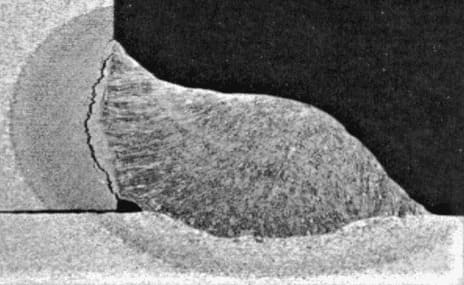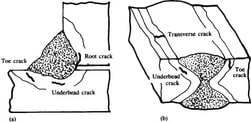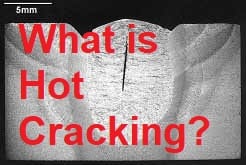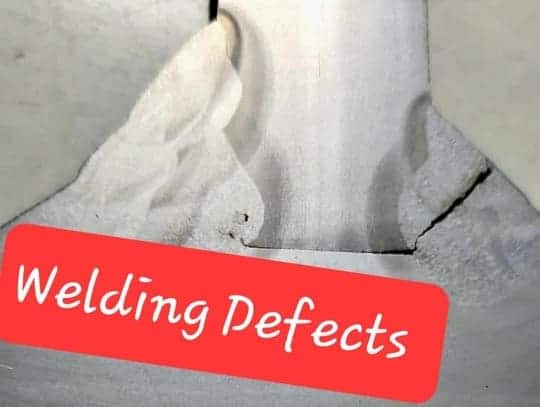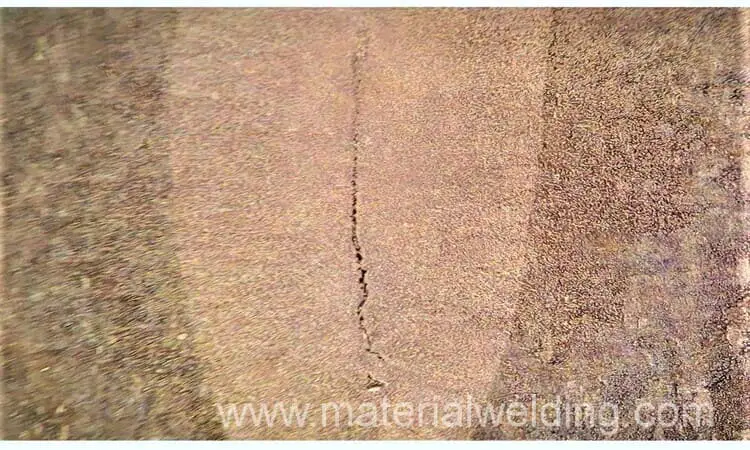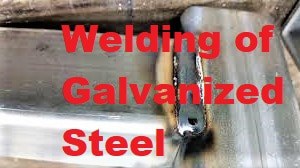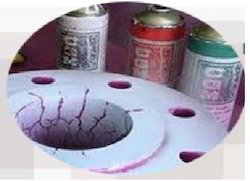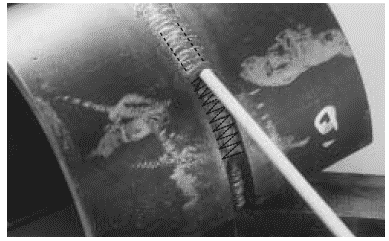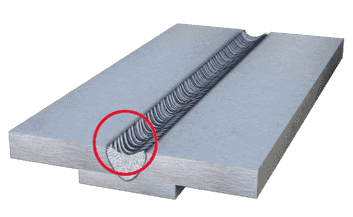What is Crater Crack in Welding?
A crater crack is a type of welding defect that can occur when:
- Weld cools too rapidly causing excessive amount of stresses on the molten weld pool end that is not able to take those stresses and result in Crater cracking, or
- There is insufficient weld metal at end of the weld to fill the groove and this weld end cracks due to solidification stresses, causing Crater Crack in the Welding.
Crater Crack occurs at the end point of the weld completed by a welder. Crater Crack in welding is more common with metals having high thermal conductivity such as Aluminum and Copper.
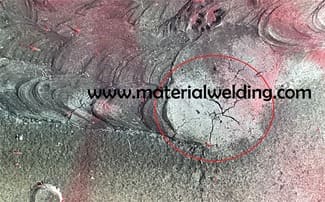
What causes Crater Crack in welding?
A crater crack is a type of welding defect that can occur when the weld metal Solidifies too quickly.
This can happen if the welding parameters are not set correctly, or if the weldment is cooled too quickly after welding.
Crater cracks are typically found at the end of a weld bead, and they can cause the weld to fail.
There are several factors that can contribute to crater cracking.
First, if the welding parameters are not set correctly (e.g., low welding amperage resulting in insufficient filling at end or not using crater fill technique, the weld metal may crack at crater location.
Second, if the weldment is cooled too quickly after welding, this can also cause the weld metal to solidify too quickly causing stresses at the weld and making it to crack.
Third, if there is insufficient penetration at the root of the weld bead, this can create a “cold lap” condition which can also lead to crater cracking.
Types of crack in Welding Video with animation.
How to Prevent Crater in Welding?
One of the most common welding defects is crater. There are several ways to prevent crater crack in welding, and these should be followed closely to avoid any issues.
Crater crack in weld metal can be prevented by using the following important tips:
- Ensure complete filling of welding stop point.
- Use step back technique during crater filling.
- Add sufficient filler in the weld pool at the weld end to compensate welding pool shrinkage.
- Use crater fill option in the welding machine, if available.
- Practice and train welders to make a smooth weld end.
- Use run-off plate if permitted by weld joint and design. This plate shall be discarded after weld completion.
- Grind weld end point before depositing next weld pass.
Crater welding definition
Crater welding refers to the filling of crater that is being formed at weld end point if not provided with sufficient weld metal.
Welder uses generally step back welding technique for Crater welding. This ensure that crater is completely filled and thus prevent crater pipe or crater cracking in welding issues.
